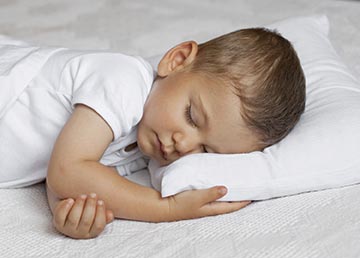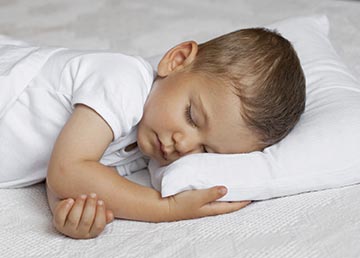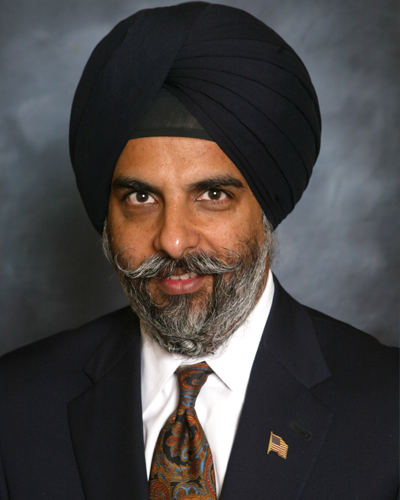LISTEN CLOSELY
“When you hear snoring coming from your child’s room, a condition called sleep apnea may be the reason. There are two types, central and obstructive. Central sleep apnea, typically, occurs more in infants, but obstructive is the form that’s becoming of greater concern,” says Dr. Ahuja. “Studies suggest that while 10 to 12 percent of children may snore, as many as one to three percent may have obstructive sleep apnea,” he notes.
WHAT IS SLEEP APNEA?
“Obstructive sleep apnea happens when there’s a blockage in the airway that can impact the child’s ability to exchange air,” says Dr. Ahuja. If you notice some of these symptoms, your child could be experiencing sleep apnea:
- Thrashing or moving around in bed
- Periods of choking or gasping for breath while asleep
- Frequent nighttime awakenings
- Mouth breathing
- Excessive daytime sleepiness, irritability or hyperactivity
- Behavioral issues or poor performance at school
- Bed wetting (especially over the age of five)
- Poor growth
WHEN IS SNORING SERIOUS?
“While snoring by itself doesn’t necessarily mean that the child has sleep apnea, it is definitely a manifestation of sleep disordered breathing,” says Dr. Ahuja. “It is important to watch for other symptoms and signs and to discuss it with your child’s pediatrician.” Sometimes, a sleep study is necessary to confirm the condition. Your pediatrician, or an Otolaryngologist (ear-nose-and-throat specialist), can guide you.
STOPPING SLEEP APNEA
Previously, the most frequent indication for removal of tonsils was throat infections. That is less frequently the case today, because of better antibiotic treatment and more stringent guidelines. However, tonsillectomy and adenoidectomy remain a critical, and usually the first, management option for children with sleep apnea and obstructive breathing. “In fact, nearly 80 percent of normal healthy children will show resolution of their sleep apnea and obstructive symptoms after removal of their tonsils and adenoids,” says Dr. Ahuja, “but the results are less gratifying in children who are obese or have other associated conditions or syndromes.” Treatment considerations also include advising overweight children to shed some pounds. “The accumulation of fat in the body can also lead to the narrowing of the available airway in the throat,” he explains.
FAST FACTS
- The age range when obstructive sleep apnea is commonly found: 3-6 Years Old
- The number of tonsillectomy and adenoidectomy surgeries performed annually in the U.S., in children 15 years and younger : 530,000
- The percentage of sleep apnea cases that can be cured by removing the tonsils and adenoids: 80%



















